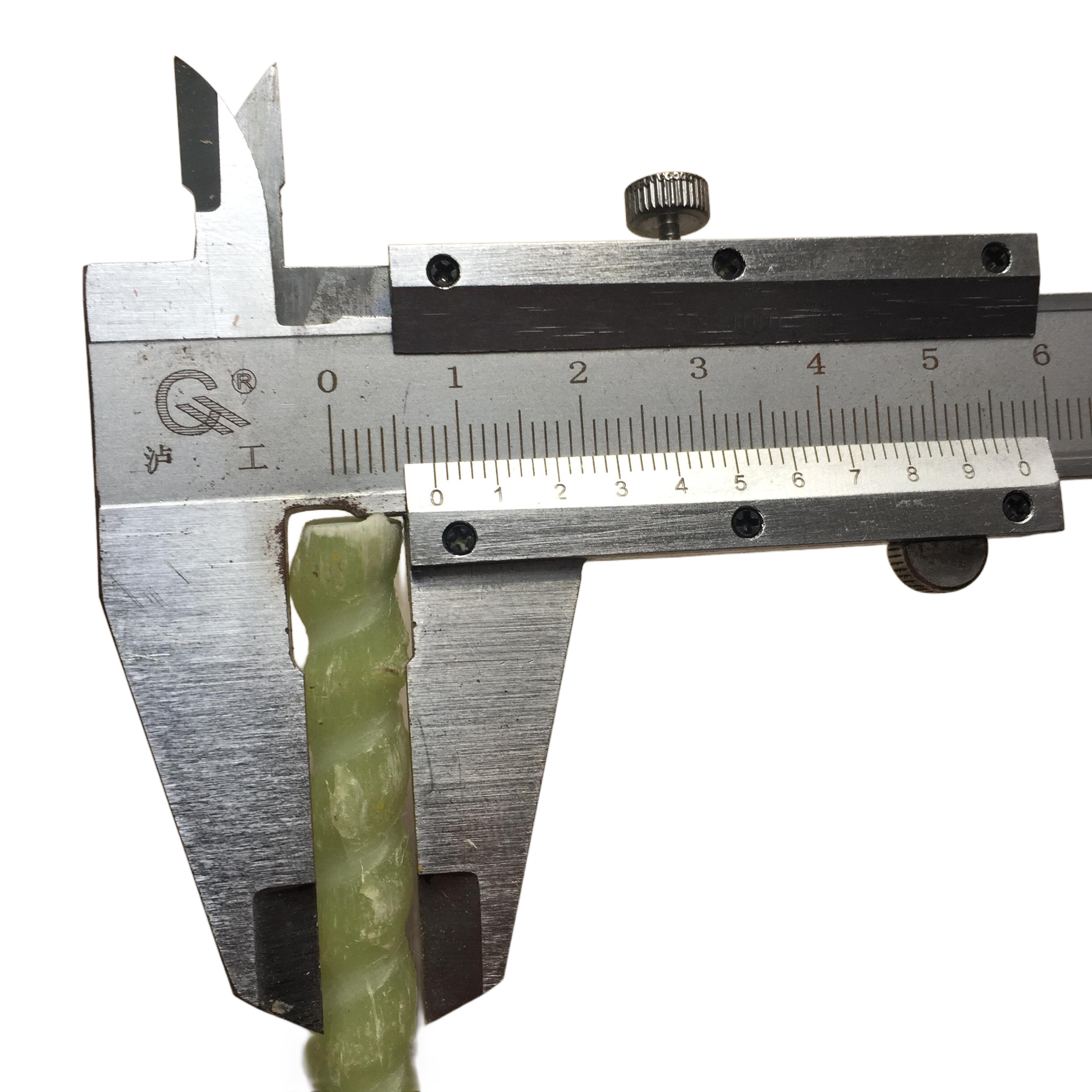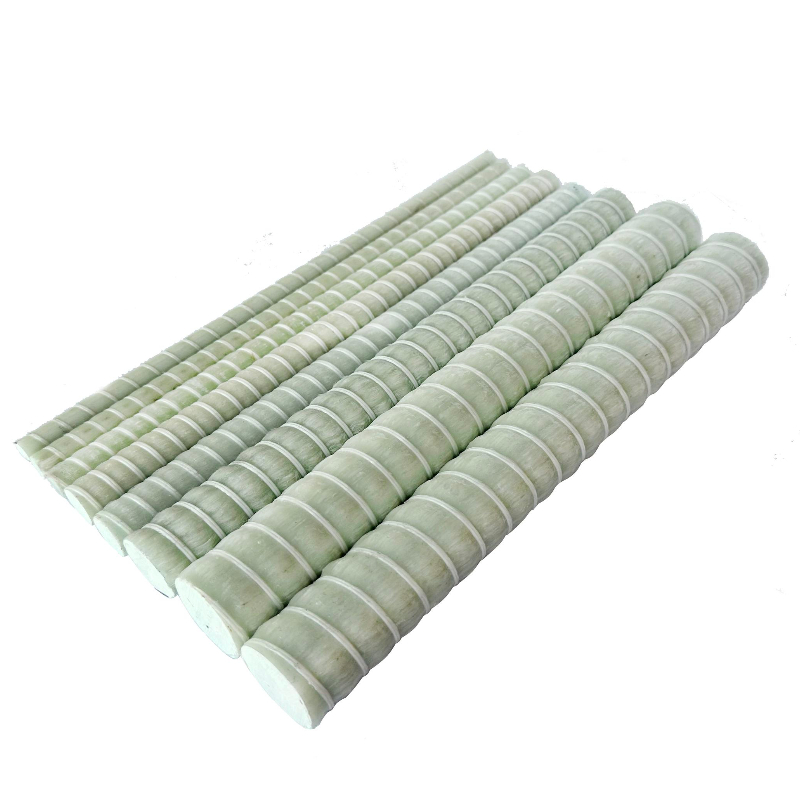In the ever-evolving landscape of construction and infrastructure, the need for durable, sustainable, and cost-effective materials has never been more critical. Among these, Glass Fiber Reinforced Polymer (GFRP) rebar has emerged as a game-changer, offering a unique blend of strength, longevity, and resistance to environmental challenges. This innovative material is not just a boon for structural integrity but also a significant contributor to the sustainability goals of modern engineering. As we delve deeper into the role of GFRP rebar, we uncover its potential to reshape the future of infrastructure, making it more resilient and eco-friendly.
What is GFRP Rebar?
Glass Fiber Reinforced Polymer (GFRP) rebar is a cutting-edge material that is revolutionizing the construction industry. It is crafted from a composite of glass fibers and a polymer resin, resulting in a product that is both incredibly strong and remarkably lightweight. This unique combination of materials gives GFRP rebar its outstanding properties, making it an ideal choice for various construction applications.
One of the most notable features of GFRP rebar is its exceptional resistance to corrosion. Unlike traditional steel rebar, which can rust and deteriorate over time when exposed to moisture and chemicals, GFRP rebar remains unaffected by environmental factors. This corrosion resistance significantly extends the lifespan of structures, reducing maintenance costs and enhancing durability.
Moreover, GFRP rebar offers high tensile strength, making it capable of withstanding substantial loads. Its lightweight nature simplifies handling and installation, potentially reducing labor costs and speeding up construction timelines. Additionally, GFRP rebar is non-magnetic and non-conductive, making it an excellent choice for applications in sensitive environments, such as hospitals or areas with high electromagnetic interference.
In summary, GFRP rebar stands out as a versatile and innovative solution in the realm of construction materials, combining strength, durability, and resistance to environmental challenges in a way that traditional materials cannot match.
Advantages of GFRP Rebar in Construction
The adoption of GFRP rebar in construction projects brings forth a multitude of advantages, setting it apart from conventional materials like steel. One of the most significant benefits is its exceptional resistance to corrosion. Unlike steel, which is prone to rusting when exposed to moisture or certain chemicals, GFRP rebar remains unaffected by environmental factors. This property not only extends the lifespan of structures but also reduces long-term maintenance and repair costs, making it a cost-effective choice for projects.
Another key advantage of GFRP rebar is its remarkable strength-to-weight ratio. This characteristic makesGFRP rebar much lighter than traditional steel rebar, facilitating easier handling and installation. The reduced weight can lead to lower shipping costs and quicker installation times, which translates to savings on labor and overall project costs. Additionally, the high tensile strength of GFRP rebar ensures that it can withstand substantial loads, making it suitable for a wide range of structural applications.
GFRP rebar also boasts a high resistance to alkalis, acids, and salts, further enhancing its suitability for use in harsh environments. Its non-magnetic and non-conductive properties make it an ideal choice for specialized applications, such as in hospitals or areas requiring electromagnetic neutrality. These unique features of GFRP rebar not only improve the durability and safety of structures but also contribute to more sustainable and efficient construction practices.
Applications of GFRP Rebar in Infrastructure
The versatility of GFRP rebar opens up a wide array of applications in the realm of infrastructure, significantly enhancing the durability and sustainability of various projects. One of the most prominent uses is in bridge construction, where the lightweight and corrosion-resistant properties of GFRP rebar offer long-term resilience against harsh environmental conditions. This makes bridges safer and more reliable, reducing the need for frequent maintenance.
Another critical application is in the construction of parking garages and other structures exposed to de-icing chemicals. The non-corrosive nature of GFRP rebar makes it an ideal choice for these environments, where traditional steel rebar would deteriorate rapidly. Additionally, its use in seawalls and marine structures is becoming more common, as GFRP rebar can withstand the corrosive effects of saltwater, ensuring the longevity of coastal and waterfront constructions.
Furthermore, GFRP rebar is increasingly being used in precast concrete products, such as pipes and manholes, where its properties can significantly extend the service life of these components. Its application in residential and commercial buildings is also on the rise, particularly in areas prone to seismic activity, due to its superior tensile strength and flexibility. These diverse applications highlight the adaptability of GFRP rebar to meet the specific needs of modern infrastructure projects, providing a sustainable and durable solution for a wide range of construction challenges.
Future Trends in GFRP Rebar Technology
The future of GFRP rebar technology looks promising, with ongoing advancements poised to further revolutionize the construction industry. One of the most exciting developments is the integration of smart technologies into GFRP rebar. Researchers are exploring the incorporation of sensors within the rebar to monitor structural health in real-time. These sensors could provide critical data on stress, strain, temperature, and potential damage, enabling proactive maintenance and enhancing the safety and longevity of structures.
Moreover, the manufacturing processes for GFRP rebar are becoming more efficient and cost-effective. Innovations in production techniques are expected to reduce the environmental impact and energy consumption associated with GFRP rebar production. These advancements will make GFRP rebar more accessible and affordable, encouraging wider adoption across different types of construction projects.
Additionally, there is a growing focus on developing hybrid materials that combine the benefits of GFRP with other sustainable materials. These hybrid solutions aim to optimize the performance of GFRP rebar while minimizing its environmental footprint. For instance, combining GFRP with recycled materials or bio-based resins could lead to even more eco-friendly alternatives.
As these trends continue to evolve, GFRP rebar is set to play an increasingly vital role in shaping the future of sustainable and resilient infrastructure. Its ability to adapt to new technologies and environmental challenges positions it as a key material in the ongoing quest for innovative construction solutions.
The integration of GFRP rebar into modern infrastructure projects marks a significant advancement in construction technology. Its unique properties, including corrosion resistance, high tensile strength, and lightweight nature, offer unparalleled benefits in terms of durability, safety, and cost-effectiveness. As we have explored, GFRP rebar is not only transforming the way we build bridges, parking garages, and marine structures but is also setting new standards for sustainability in the construction industry. With ongoing innovations and the potential for smart technology integration, GFRP rebar is poised to play a crucial role in the future of infrastructure development. Its adoption represents a forward-thinking approach to building resilient, long-lasting, and environmentally friendly structures that meet the demands of modern society.




























